|
1945
Deutsche
Version...
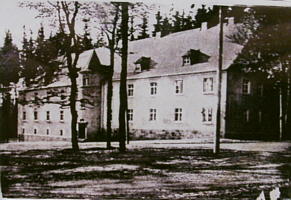 After
scout planes had searched for camp Wildflecken fruitlessly (camouflaged
by high close-standing trees), flyers were dropped-off with the following
note: "Wildflecken we will find you", American Forces moved into the
village of Wildflecken on 6 or 7 April 1945 with tracked and wheeled
vehicles. After
scout planes had searched for camp Wildflecken fruitlessly (camouflaged
by high close-standing trees), flyers were dropped-off with the following
note: "Wildflecken we will find you", American Forces moved into the
village of Wildflecken on 6 or 7 April 1945 with tracked and wheeled
vehicles.
After a person from Wildflecken was captured by US troops, he was ordered
to go back into town with the message that the town`s Mayor should hoist
a white flag and they would stop firing. Which is what happened. Mayor
Götz drove thru the village with US troops and gave the order to hoist
a white flag. Tank fire caused damages. According to witnesses, the
Mayor`s office had to be evacuated. American soldiers threw files and
other documents out on the street.
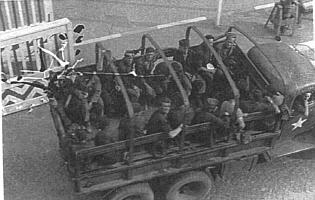 US
troops destroyed and demolished military facilities within the training
area. There was no more training. The remaining villages Reußendorf
and Werberg, as well as Dalherda and the buildings at the Arnsberg and
Haus Franken were resettled by evacuees from Eastern Europe. Some families
and their decendants still live in this region. US
troops destroyed and demolished military facilities within the training
area. There was no more training. The remaining villages Reußendorf
and Werberg, as well as Dalherda and the buildings at the Arnsberg and
Haus Franken were resettled by evacuees from Eastern Europe. Some families
and their decendants still live in this region.
During
WWII Polish, Belgian, French and Russian POWs, who came from different
STALAGs, could be found at the training area/camp. The camp of russian
POWs was at the former Ammunition Storage Point (ASP3) of recent US
troops. After American troops occupied Wildflecken (6 or 7 April 1945),
detained Belgian and French soldiers returned to their native countries.
Russian and Polish people had to wait for several months.
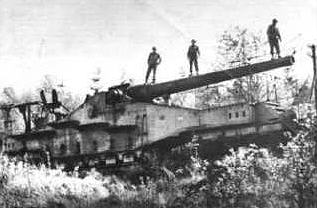 Approximately
20.000 Russians, formers POWs, foreign workers and DPs, came to camp
Wildflecken. Bruno Kleinheinz became Wildflecken`s Town Mayor. During
this time, crime bloomed: robbery and theft in Wildflecken and the surrounding
villages. But also the local population participated in plundering the
main warehouse as well as the Food Supply Point. During this time a
train with 450 tons of food was plundered. Approximately
20.000 Russians, formers POWs, foreign workers and DPs, came to camp
Wildflecken. Bruno Kleinheinz became Wildflecken`s Town Mayor. During
this time, crime bloomed: robbery and theft in Wildflecken and the surrounding
villages. But also the local population participated in plundering the
main warehouse as well as the Food Supply Point. During this time a
train with 450 tons of food was plundered.
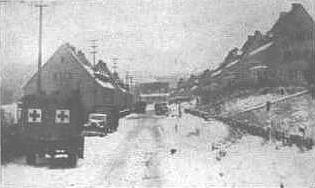 17000
Polish people moved into the camp. Companies of the 778th Tank Battalion
were stationed at the ammunition depot (MUNA). Theft prevailed, a civil
guard was founded. This situation continued until the currency reform
in June 1948. Bad conditions (no or little work, indescribable poverty,
black marketing,....) within the camp as well as the entire county of
Brückenau were the main reasons for this situation. 17000
Polish people moved into the camp. Companies of the 778th Tank Battalion
were stationed at the ammunition depot (MUNA). Theft prevailed, a civil
guard was founded. This situation continued until the currency reform
in June 1948. Bad conditions (no or little work, indescribable poverty,
black marketing,....) within the camp as well as the entire county of
Brückenau were the main reasons for this situation.
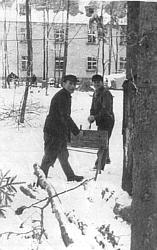 The
lack of fire wood caused the camp`s population to cut down trees, which
once camouflaged the camp. A complete deforestation occured in the surrounding
area. Rafters, beams and planks were cut out of attics and buildings
and used as fire wood. Day and night chimneys smoked. Approx. 150 tons
of bread were baked daily, therefore lots of fire wood was needed to
feed the camp`s population. The
lack of fire wood caused the camp`s population to cut down trees, which
once camouflaged the camp. A complete deforestation occured in the surrounding
area. Rafters, beams and planks were cut out of attics and buildings
and used as fire wood. Day and night chimneys smoked. Approx. 150 tons
of bread were baked daily, therefore lots of fire wood was needed to
feed the camp`s population.
Source:
"475 Jahre Wildflecken 1524 - 1999 by Gerwin Kellermann (I would also
like to thank you cordially for the spontaneous approval on 21 April
2001). Innumerable conversations with people and former employees of
the US Army (from day one, since March 1951) as well as diverse private
property documents.
Collected
and translated: Walter Kömpel, Oberbach, Germany Wkoempel@t-online.de
Reviewed by: Erna N. Bauer (thank you!)
Photos: Janie Micchelli, Newtown, PA, USA and archive Leitsch, Modlos,
Germany |
 After
scout planes had searched for camp Wildflecken fruitlessly (camouflaged
by high close-standing trees), flyers were dropped-off with the following
note: "Wildflecken we will find you", American Forces moved into the
village of Wildflecken on 6 or 7 April 1945 with tracked and wheeled
vehicles.
After
scout planes had searched for camp Wildflecken fruitlessly (camouflaged
by high close-standing trees), flyers were dropped-off with the following
note: "Wildflecken we will find you", American Forces moved into the
village of Wildflecken on 6 or 7 April 1945 with tracked and wheeled
vehicles. US
troops destroyed and demolished military facilities within the training
area. There was no more training. The remaining villages Reußendorf
and Werberg, as well as Dalherda and the buildings at the Arnsberg and
Haus Franken were resettled by evacuees from Eastern Europe. Some families
and their decendants still live in this region.
US
troops destroyed and demolished military facilities within the training
area. There was no more training. The remaining villages Reußendorf
and Werberg, as well as Dalherda and the buildings at the Arnsberg and
Haus Franken were resettled by evacuees from Eastern Europe. Some families
and their decendants still live in this region. Approximately
20.000 Russians, formers POWs, foreign workers and DPs, came to camp
Wildflecken. Bruno Kleinheinz became Wildflecken`s Town Mayor. During
this time, crime bloomed: robbery and theft in Wildflecken and the surrounding
villages. But also the local population participated in plundering the
main warehouse as well as the Food Supply Point. During this time a
train with 450 tons of food was plundered.
Approximately
20.000 Russians, formers POWs, foreign workers and DPs, came to camp
Wildflecken. Bruno Kleinheinz became Wildflecken`s Town Mayor. During
this time, crime bloomed: robbery and theft in Wildflecken and the surrounding
villages. But also the local population participated in plundering the
main warehouse as well as the Food Supply Point. During this time a
train with 450 tons of food was plundered. 17000
Polish people moved into the camp. Companies of the 778th Tank Battalion
were stationed at the ammunition depot (MUNA). Theft prevailed, a civil
guard was founded. This situation continued until the currency reform
in June 1948. Bad conditions (no or little work, indescribable poverty,
black marketing,....) within the camp as well as the entire county of
Brückenau were the main reasons for this situation.
17000
Polish people moved into the camp. Companies of the 778th Tank Battalion
were stationed at the ammunition depot (MUNA). Theft prevailed, a civil
guard was founded. This situation continued until the currency reform
in June 1948. Bad conditions (no or little work, indescribable poverty,
black marketing,....) within the camp as well as the entire county of
Brückenau were the main reasons for this situation. The
lack of fire wood caused the camp`s population to cut down trees, which
once camouflaged the camp. A complete deforestation occured in the surrounding
area. Rafters, beams and planks were cut out of attics and buildings
and used as fire wood. Day and night chimneys smoked. Approx. 150 tons
of bread were baked daily, therefore lots of fire wood was needed to
feed the camp`s population.
The
lack of fire wood caused the camp`s population to cut down trees, which
once camouflaged the camp. A complete deforestation occured in the surrounding
area. Rafters, beams and planks were cut out of attics and buildings
and used as fire wood. Day and night chimneys smoked. Approx. 150 tons
of bread were baked daily, therefore lots of fire wood was needed to
feed the camp`s population.